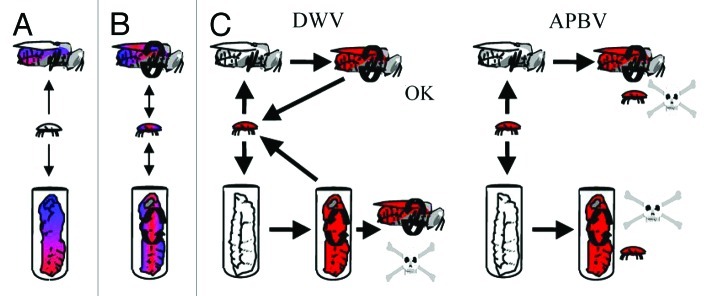
Figure 3. Role of Varroa in the transmission of deformed wing (DWV) and acute paralysis bee (APBV) viruses in the honeybee colony showing three basic phases. (A) Naturally diverse cloud of viral variants (red-blue) persisting at low levels in the honeybees. (B) Varroa feeds on an overtly infected bee introducing a new viral transmission route i.e., via injection. This over a period of years reduces the strain diversity selecting a genetically restricted cloud of highly virulent (red) strains. (C) The virulent DWV (red) strain selected by the Varroa-bee transmission cycle results in a reduced lifespan of bees infected as pupa, but not bees infected as adults, since they have a normal lifespan despite high viral loads. These adult bees become carriers, which aids the further spread of DWV to other colonies. However, in the acutely virulent ABPV, the virus quickly kills both the adult and pupa bee once the pathogen has been transmitted by the mite. This breaks the transmission cycle as the vector (mite) is also killed either by the adult bee dying away from the colony or been entombed within the brood cell.
